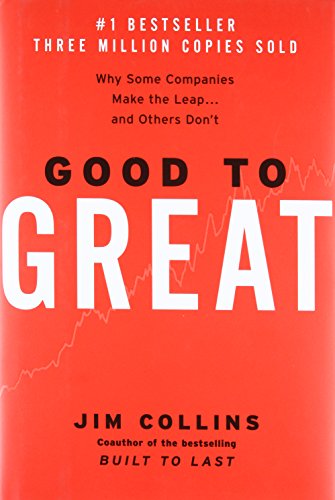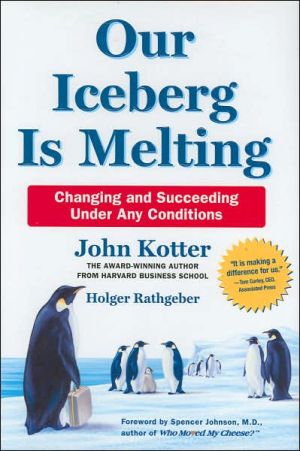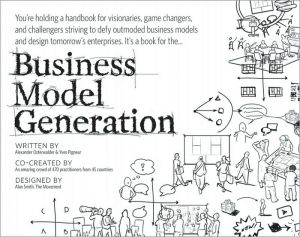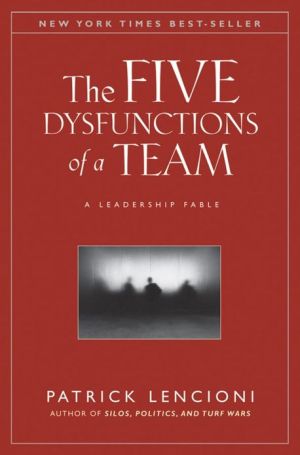Health Organizations: Theory, Behavior, and Development
While there are many textbooks available for courses in organizational behavior there are very few that address organization theory and even fewer that discuss organization development in any significant way. In three sections, this text thoroughly examines organization theory, organization behavior, and organization development. Each section contains key chapters that address foundations, research, and new directions in these domains.
Search in google:
In a single volume, Health Organizations: Theory, Behavior, and Development thoroughly examines organization theory, organization behavior, and organization development in the unique context of the healthcare setting. Each section contains key chapters that address foundations, research, and new directions in these domains. It is an ideal text for undergraduate and graduate students in health administration, nursing, public health, community health, and health professions courses. Doody Review Services Reviewer:Lena L Watson, Dr. RN, MBA/HCM(University of Phoenix)Description:This unique book discusses modern management theories, concepts, and principles in the context of healthcare.Purpose:It provides an integrative perspective of organizational theories in healthcare. These are important objectives since healthcare is complex, dynamic, and unique. The editor and contributors review virtually every organizational, behavioral, and management theory relevant to healthcare.Audience:The book describes how students and instructors can benefit from reading and applying the information. However, any healthcare leader interested in understanding ways to apply proven theories to an organization will benefit from it. The editor is a noted scholar in the field of health professions who has published over 100 articles and 10 books on management and healthcare issues. In addition, chapters are written by expert contributing authors. Features:The first of the book's three parts contains five chapters on organization theory and foundation. Part 2 covers organization behavior and dynamics in 10 chapters, and the six chapters in part 3 cover organization development and change. In addition to discussing the history and most noted organizational theories, behaviors, and principles, the book tackles some of the more challenging and sensitive topics in healthcare such as healthcare management dysfunction and organizational development for terrorism and natural disasters. The layout is easy to follow and the diagrams and charts are easy to understand. The end of each chapter has learning activities, discussion questions, case studies, references, and a summary. The only shortcoming is that the book has a softcover which may not withstand heavy use. Assessment:The authors explain complex theories in a manner that's interesting and comprehendible for students, and the book is unique in the way it applies existing theories to healthcare organizations. The learning activities help promote competency development and critical thinking, which is valuable for current and future healthcare leaders.
Foreword xiiiPreface xvContributors xviiAbout the Editor xxiPart 1 Organization Theory And FoundationsChapter 1 Introduction James A. Johnson Peter C. Olden 3Studying Organizations 4Beyond the Classroom 8References 8Chapter 2 Anatomy and Physiology of Theory M. Nicholas Coppola 9Introduction 9What Is Theory? 10Anatomy of Theory 13Physiology of Theory 18Chapter Summary 24Review/Discussion Questions 24Learning Activities 25References 26Chapter 3 Classical Theories of Organization Peter C. Olden Mark L. Diana 29Introduction 29Scientific Management 30Administrative Principles 33Bureaucratic Principles 36Human Relations 39Administrative Behavior 41Chapter Summary 43Review/Discussion Questions 44Learning Activities 44References 44Chapter 4 Modern Theories of Organization Mark L. Diana Peter C. Olden 47Introduction 47General Systems Theory 48Contingency Theory 50Transaction Cost Economics 51Resource Dependence Theory 53Institutional Theory 55Population Ecology 57Chapter Summary 59Review/Discussion Questions 60Learning Activities 60References 60Chapter 5 Complexity and Postmodern Theory Reuben R. McDaniel Michele E. Jordan 63Introduction 63Shared Notions and Common Focus 66Characteristics of Complex Adaptive Systems 69Managing Healthcare Organizations as Postmodernist Complex Adaptive Systems 71Decision Making and Sensemaking 72What Does This All Mean? 77Chapter Summary 78Review/Discussion Questions 78Learning Activities 79References 82Part II Organization Behavior and DynamicsChapter 6 Individual Behavior and Motivation Mary S.O'Shaughnessey 87Introduction 87Theories of Motivation 88Motivation in the Work Environment 97Changes in Motivation 100Motivation and Learning 101Impact of Age and Cultural Factors on Motivation and Learning 102Motivation and Sports 103Chapter Summary 104Review/Discussion Questions 104Learning Activities 105Case Study 105References 106Chapter 7 Group Dynamics Lana V. Ivanitskaya Sharon Glazer Dmitry A. Erofeev 109Introduction 109Groups and Teams 110Groups and Teams in Healthcare Organizations 111Roles, Diversity, and Trust 112Group Processes 114Group Formation 115Group Phenomena 116Application of Crew Resource Management (CRM) to Healthcare 118Performance and Group Effectiveness 119Chapter Summary 128Review/Discussion Questions 129Learning Activities 130Case Study 133References 133Chapter 8 Power and Politics Lee W. Bewley 137Introduction 137Sources of Power 138Politics in Health Organizations 143Chapter Summary 145Review/Discussion Questions 147Learning Activities 147References 147Chapter 9 Conflict and Interpersonal Relations Gerald R. Ledlow 149Introduction 150Conflict Management 151Interpersonal Relationships 158Chapter Summary 163Review/Discussion Questions 163References 164Chapter 10 Leadership Theory and Influence Gerald R. Ledlow M. Nicholas Coppola 167Introduction 167Defining Leadership 169A Chronological Review of Leadership Theory 171Leadership Phase Evolution 174Chapter Summary 185Review/Discussion Questions 190References 190Chapter 11 Leadership and Transformation Gerald R. Ledlow M. Nicholas Coppola Mark A. Cwiek 193Introduction 193Prescription One: The Dynamic Culture Leadership Model 194Prescription Two: The Omnibus Leadership Model 201Conclusion 208Chapter Summary 209Review/Discussion Questions 209References 210Chapter 12 Decision Making and Communication Gerald R. Ledlow James Stephens 213Introduction 214Decision Making 214Tools of Decision Making 221Communication 223Chapter Summary 229Review/Discussion Questions 230Case Study 230References 231Chapter 13 Culture Values and Ethics Rupert M. Evans 233Introduction 233What Is Corporate Culture? 234The Healthcare Setting 234How Are Culture and Climate Different? 235What is the Theory Behind Culture and Climate? 236Values and Beliefs That Support Organizational Goals 238The Ethics and the Social Responsibility of Management 245Chapter Summary 250Review/Discussion Questions 250Learning Activities 251References 252Chapter 14 Stakeholder Dynamics M. Nicholas Coppola Dawn Erckenbrack Gerald R. Ledlow 255Introduction 255Stakeholders (Actors) in Healthcare 256Utility of Parity of Healthcare in Stakeholder Dynamics 260The Sarfit Model 267Parity in Policy and Strategy 268Chapter Summary 269Review/Discussion Questions 269Learning Activities 269Case Study: The Dilemma of the Uninsured in the United States 269Case Study: Overburdened Emergency Departments Threatened by the Problem of Uninsured 271Case Study: Business Feels the Consequences of the Uninsured Problem 273References 275Chapter 15 Organizational Dysfunction and Pathology David R. Graber 279Introduction 279Healthcare Organizational Groups 281Complexity and Work Intensity 282Ambiguous and Conflicting Cultures 283Healthcare Management and Organizational Dysfunction 285Conclusion 286Chapter Summary 287Review/Discussion Questions 287References 288Part III Organization Development and ChangeChapter 16 Transformational Change and Development James Whitlock 291Introduction 291Organizational Development: Framework for Change 293Creating the Capacity to Change 298Chapter Summary 308Review Questions 309References 309Chapter 17 Team Building and Development Jo-Ann Costa 311Introduction 312Types of Teams 312The Team Advantage 313Benefits of Teams 314Team Composition 315Team Evolution 316Stages of Team Development 318Building Team Functionality 318Ongoing Training = Sustainable Knowledge 321Problem Solving 321Continuous Reinforcement: The Value of the Team's Work 322Getting Down to Business 322Defining Success 324Beyond Metrics 324Selling the Solution: Management Buy-In 325Back on the Everyday Job 326Trends 326Chapter Summary 329Review/Discussion Questions 329Learning Activity 329References 330Chapter 18 Physician Leadership and Development Sudha Xirasagar 331Clinical Performance: The Key to Healthcare Reform 331Why Physician Leadership Is Needed 333Understanding Physician Behavior 333From Clinician to Leader-Essential Changes in Mindset 336Leadership Development Models 337Chapter Summary 344Review/Discussion Questions 344References 345Chapter 19 Governance and Board Development Dennis G. Erwin Andrew N. Garman 349Introduction 349Board Organization 350Board Officers 351Board Committees 351Board Meeting Format 353The Relationship Between Senior Management and the Board 355Fiduciary Duties 355Financial Oversight 356Operating Oversight 356Strategic Oversight 358Oversight of Patient Care and Resource Utilization 360Changing Board Models 361Effective Governance: Cultures and Activities 362Board Assessment 362Board Member Education 364Current Issues and Controversies 366Chapter Summary 366Review/Discussion Questions 367Learning Activity 367References 369Chapter 20 Organization Development for Terrorism and Natural Disasters Ahmed Adu-Oppong Gerald R. Ledlow Mark A. Cwiek James A. Johnson M. Nicholas Coppola 371Introduction 372Significance to Healthcare Leaders 372The Threat 374Business Involvement: What Should Be Done 383A Preparedness Plan 385Chapter Summary 392References 392Chapter 21 Organization Development and the Future James A. Johnson 395Introduction 395Development Practice and Philosophy 396Development in a Changing World 397Chapter Summary 398Review/Discussion Questions 399Learning Activities 399References 399Index 401
\ Reviewer: Lena L Watson, Dr. RN, MBA/HCM(University of Phoenix)\ Description: This unique book discusses modern management theories, concepts, and principles in the context of healthcare.\ Purpose: It provides an integrative perspective of organizational theories in healthcare. These are important objectives since healthcare is complex, dynamic, and unique. The editor and contributors review virtually every organizational, behavioral, and management theory relevant to healthcare.\ Audience: "The book describes how students and instructors can benefit from reading and applying the information. However, any healthcare leader interested in understanding ways to apply proven theories to an organization will benefit from it. The editor is a noted scholar in the field of health professions who has published over 100 articles and 10 books on management and healthcare issues. In addition, chapters are written by expert contributing authors. "\ Features: "The first of the book's three parts contains five chapters on organization theory and foundation. Part 2 covers organization behavior and dynamics in 10 chapters, and the six chapters in part 3 cover organization development and change. In addition to discussing the history and most noted organizational theories, behaviors, and principles, the book tackles some of the more challenging and sensitive topics in healthcare such as healthcare management dysfunction and organizational development for terrorism and natural disasters. The layout is easy to follow and the diagrams and charts are easy to understand. The end of each chapter has learning activities, discussion questions, case studies, references, and a summary. The only shortcoming is that the book has a softcover which may not withstand heavy use. "\ Assessment: The authors explain complex theories in a manner that's interesting and comprehendible for students, and the book is unique in the way it applies existing theories to healthcare organizations. The learning activities help promote competency development and critical thinking, which is valuable for current and future healthcare leaders.\ \ \ \ \ Reviewer: Lena L Watson, Dr. RN, MBA/HCM(University of Phoenix) \ Description: This unique book discusses modern management theories, concepts, and principles in the context of healthcare.\ Purpose: It provides an integrative perspective of organizational theories in healthcare. These are important objectives since healthcare is complex, dynamic, and unique. The editor and contributors review virtually every organizational, behavioral, and management theory relevant to healthcare.\ Audience: "The book describes how students and instructors can benefit from reading and applying the information. However, any healthcare leader interested in understanding ways to apply proven theories to an organization will benefit from it. The editor is a noted scholar in the field of health professions who has published over 100 articles and 10 books on management and healthcare issues. In addition, chapters are written by expert contributing authors. \ Features: "The first of the book's three parts contains five chapters on organization theory and foundation. Part 2 covers organization behavior and dynamics in 10 chapters, and the six chapters in part 3 cover organization development and change. In addition to discussing the history and most noted organizational theories, behaviors, and principles, the book tackles some of the more challenging and sensitive topics in healthcare such as healthcare management dysfunction and organizational development for terrorism and natural disasters. The layout is easy to follow and the diagrams and charts are easy to understand. The end of each chapter has learning activities, discussion questions, case studies, references, and a summary. The only shortcoming is that the book has a softcover which may not withstand heavy use. \ Assessment: The authors explain complex theories in a manner that's interesting and comprehendible for students, and the book is unique in the way it applies existing theories to healthcare organizations. The learning activities help promote competency development and critical thinking, which is valuable for current and future healthcare leaders.\ \








